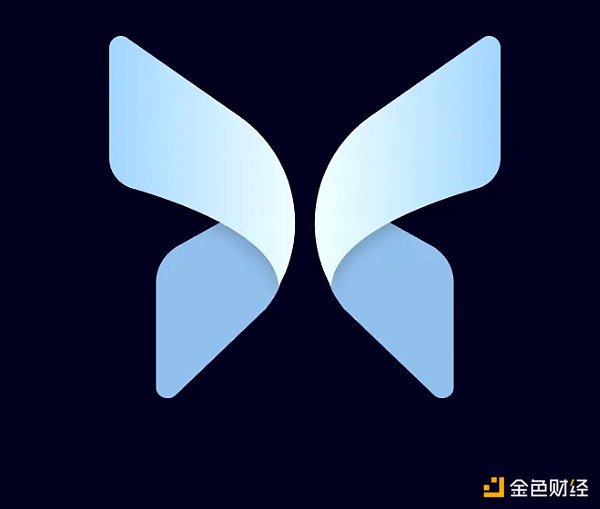Author: Paul Veradittakit, Partner at Pantera Capital; Translation: 0xjs@黄金财经
Key Points:
*Morpho is surpassing traditional protocols such as Compound to change the DeFi landscape and demonstrate the power of its innovative lending model.
*Originally leveraging Morpho Optimizers for direct peer-to-peer credit lines, Morpho has now expanded to include Morpho Blue, which uses a peer-to-pool model, combining the best of both worlds for greater efficiency.
*Both models address inefficiencies of traditional pool-based systems, such as underutilization of capital. While Morpho Optimizers optimize direct matching between lenders and borrowers, Morpho Blue provides independent lending pools with higher loan-to-value ratios.
* Morpho’s total loan value has reached a major milestone, with Morpho Blue catching up quickly and accounting for a large portion of Morpho’s total value locked (TVL) in a short period of time.
Foreword
DeFi is revolutionizing the way we think about financial services, challenging traditional banks and loan structures with groundbreaking innovations. Among the various protocols on Ethereum, Morpho stands out, recently surpassing Compound in total loan value. This achievement not only highlights the effectiveness of Morpho's innovative lending model, but also marks a broader shift in digital asset management across the DeFi space. Originally known for its peer-to-peer lending through Morpho Optimizers, Morpho has further evolved with the launch of Morpho Blue, a model that enhances traditional pool-based lending systems to provide more efficient and adaptable financial solutions.

Overview of the Current DeFi Landscape
DeFi builds on the modern financial landscape, introducing blockchain-based solutions that redefine how credit is accessed and provided. The industry is dominated by platforms such as Aave and Compound, which facilitate billions of dollars in transactions through dynamic lending models. Here, users deposit digital assets into a public pool of funds, from which others can borrow, creating a vibrant ecosystem where liquidity is maintained and assets are actively exchanged.
Despite its success, the traditional pool lending model is not without its shortcomings, especially in dealing with capital efficiency. A large portion of deposited assets remains idle, unable to generate returns and leading to system inefficiencies.
Morpho addresses these inefficiencies head-on with its peer-to-peer (P2P) lending model. By directly matching lenders and borrowers, Morpho not only optimizes capital utilization, but also increases the interest rate offered to both parties. Its system overlays a matching engine on top of existing protocols such as Aave and Compound, allowing users to enjoy the benefits of established pools of capital with the added advantage of potential direct matching. If direct matching is not feasible, users can still benefit from the liquidity of the underlying pool of capital, ensuring that Morpho retains the fundamental advantages of the pool-based model while innovating on its functionality.
The Rise of Morpho
Looking at Morpho’s progress, a major milestone was achieved when its total loan value climbed to $903 million, surpassing Compound’s $865 million. This was more than just a win in terms of volume; it was a testament to the protocol’s ability to enhance the lending experience, reflecting the growing demand for more direct financial interactions within the ecosystem.
Initially, this growth was driven by Morpho Optimizers, the first version of Morpho built on top of Aave and Compound and designed to address the inefficiencies of these platforms by creating peer-to-peer lines of credit between fund providers and borrowers.
However, newer product Morpho Blue has begun to catch up significantly, accounting for 40% of Morpho's total locked value (TVL) in just three months. Morpho Blue uses a peer-to-peer pooling model similar to Aave and Compound, but does so in a more efficient manner, featuring independent lending pools with higher loan-to-value ratios and higher utilization.

Impact and Future Implications
The rise of Morpho has far-reaching implications. With the rise of P2P lending, we may see a shift in DeFi financial markets to be more competitive and efficient. However, this evolution will require the industry to address new challenges, such as managing the complexity of peer-to-peer interactions and ensuring strong security measures against potential risks. Designed to address the fragility and inefficiency of the current pooled lending model, Morpho Blue is a simple, immutable primitive that separates the core lending protocol from the risk management and user experience layers, creating an open market for risk and product management. With permissionless market creation and customizable risk profiles, Morpho Blue offers a flexible alternative to the one-size-fits-all models found in Aave and Compound. Over time, Morpho Optimizers will be deprecated as Morpho Blue continues to grow its influence and reshape the landscape of decentralized finance.
Morpho Founders
At the helm of Morpho Labs are co-founders Paul Frambot and Merlin Egalite, whose combined expertise is driving the platform to new heights. Paul, with a background in blockchain and distributed systems from École Polytechnique, and Merlin, an experienced software developer from CentraleSupélec, are driving Morpho’s evolution into a secure, open, and resilient lending protocol.
Conclusion
Morpho’s success vividly illustrates the dynamic nature of DeFi and its potential for continued innovation. By challenging established financial models and introducing more efficient solutions, Morpho is thriving. It is paving the way for a new era of DeFi. Looking ahead, the continued development of DeFi platforms like Morpho will undoubtedly help shape the future financial landscape.
 JinseFinance
JinseFinance
 JinseFinance
JinseFinance JinseFinance
JinseFinance JinseFinance
JinseFinance JinseFinance
JinseFinance Sanya
Sanya Clement
Clement Cointelegraph
Cointelegraph Others
Others Bitcoinist
Bitcoinist Bitcoinist
Bitcoinist